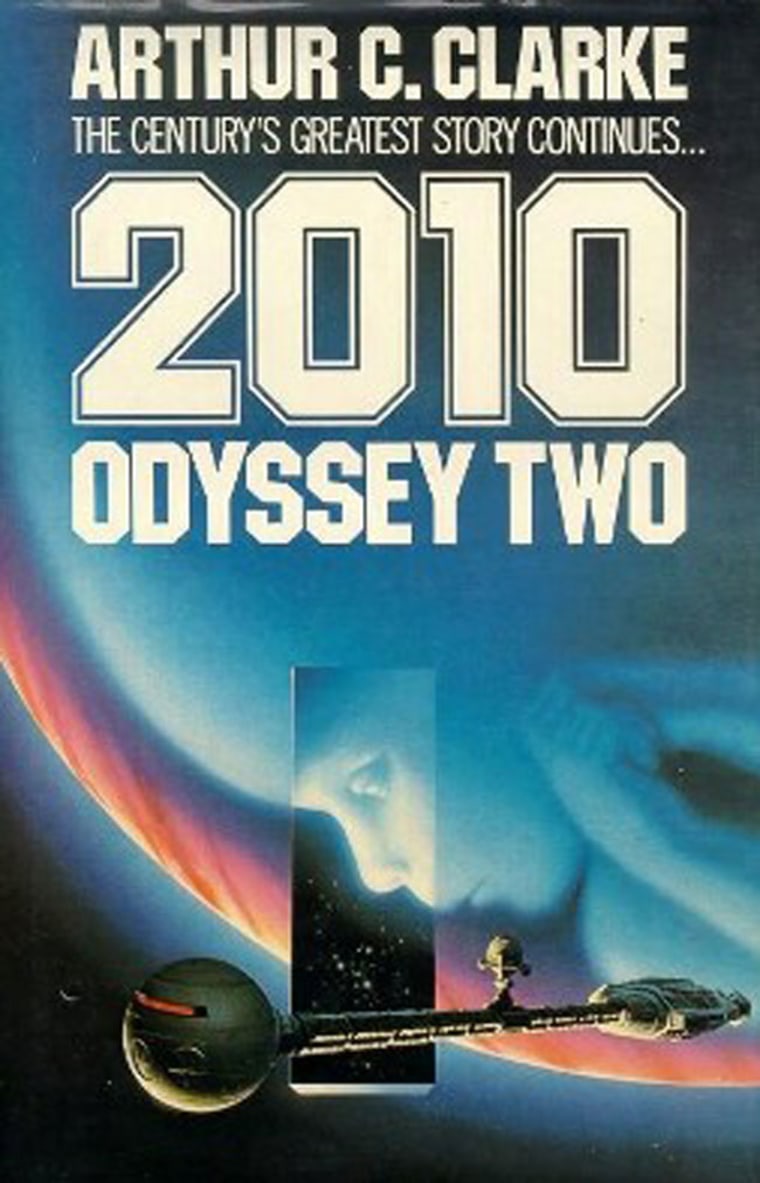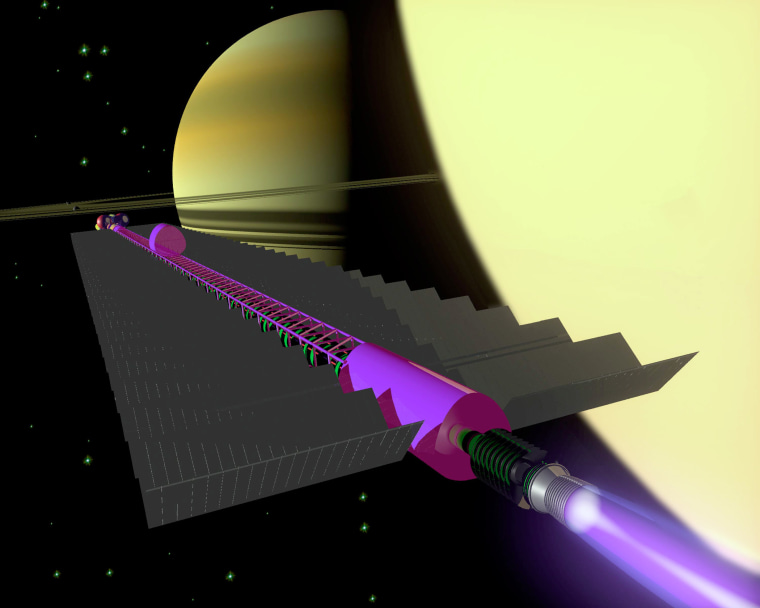The year 2010 has arrived, but humans have yet to travel out to the gas giants of our solar system as portrayed by Arthur C. Clarke in his book "2010: Odyssey Two" — much less unearth alien artifacts on the moon.
Clarke was more than just a science fiction legend — he was a physicist, and in 1945, the same year he sold his first story, he was the first to propose the concept of geostationary telecommunications satellite networks, more than a decade before the first orbital rocket flight. He died in 2008 at age 90.
Clarke's book "2010" made its debut in 1982 as a sequel to his iconic work "2001: A Space Odyssey."
Now, 28 years later, the real 2010 leaves much to be desired. Let's see how far we have to go before reaching Clarke's vision of our present:
The power of the sun
In "2010," the lead characters venture out to Jupiter employing spacecraft equipped with "the Sakharov drive," which uses "a pulsed thermonuclear reaction to heat and expel virtually any propellant material."
In nuclear fusion, atomic nuclei are forced to fuse together, which can generate an extraordinary amount of power when a fraction of the mass of these atoms gets converted into energy, following Einstein's famous equation: E=mc2. The Sakharov drive, named after Russian nuclear physicist and political dissident Andrei Sakharov, uses this energy to heat and expel liquid hydrogen and potentially methane, ammonia and even water.
Scientists have yet to master thermonuclear power. Still, the strategy the Sakharov drive employed — inertial confinement fusion, which uses lasers to heat and compress pellets of fuel — could see a major advance in 2010.
The largest and most energetic inertial confinement fusion system built to date, the National Ignition Facility in California, is set to begin experiments this year to reach the long-sought goal of "ignition," producing more energy than was put in to start the reaction.
Alien life in our backyard
While "2001" suggest that alien life might exist, "2010" portrayed aliens evolving right in our own solar system, both deep in the atmosphere of Jupiter and the underground oceans of Jupiter's moon Europa. Life on alien moons has long been a staple of science fiction, and the recent sci-fi blockbuster "Avatar" is set on a jungle moon of a fictional planet orbiting the real Alpha Centauri A.
Although we have no way of peering into Jupiter to look for life, most planetary scientists do believe oceans exist beneath Europa's surface. These subterranean seas are kept warm by the incredible tidal forces churned up by Jupiter's gravitational pull.
Hibernation

To save on resources during the long voyage to the outer planets, crews relied on hibernation. Although suspended animation remains out of reach, scientists have actually made progress in the field.
Researcher Mark Roth of the Fred Hutchinson Cancer Research Center in Seattle and his colleagues are conducting research to put humans into a hibernation-like state by having people inhale hydrogen sulfide.
Paleontologist Peter Ward at the University of Washington at Seattle even suggested genetic engineering humans for the types of brain or nervous systems that help one to go into hibernation.
"My mind is going. I can feel it."
In the novel, scientists reboot HAL, the psychotic artificial intelligence that killed nearly all the astronauts in "2001." In just a few days, HAL not only regains speech, facial recognition, speech recognition and emotion recognition, but can also once more reason, understand and carry out conversations, and control a spaceship.
We also discover the reason for HAL's killing spree — the contradictory orders the computer was given led to "what would be called, in human terms, a psychosis — specifically, schizophrenia."
When Clarke wrote "2001" in the 1960s, a number of computer scientists were optimistic that machines with HAL's capabilities might soon exist, and Marvin Minsky, co-founder of the MIT Artificial Intelligence Laboratory, was an adviser on the film. In 2010, however, only a handful of these breakthroughs have been reached, such as speech and facial recognition. No one has a machine capable of common-sense reasoning, much less capable of then going crazy.
Still, fantastic advances have been made in computing over the years. Last year IBM even claimed it has a computer system that can simulate the thinking power of a cat's brain with 1 billion neurons and 10 trillion individual learning synapses.
Who knows? Maybe humanity could have developed artificial intelligences, nuclear-powered spaceships and moon bases if we had alien monoliths guiding our evolution too.
